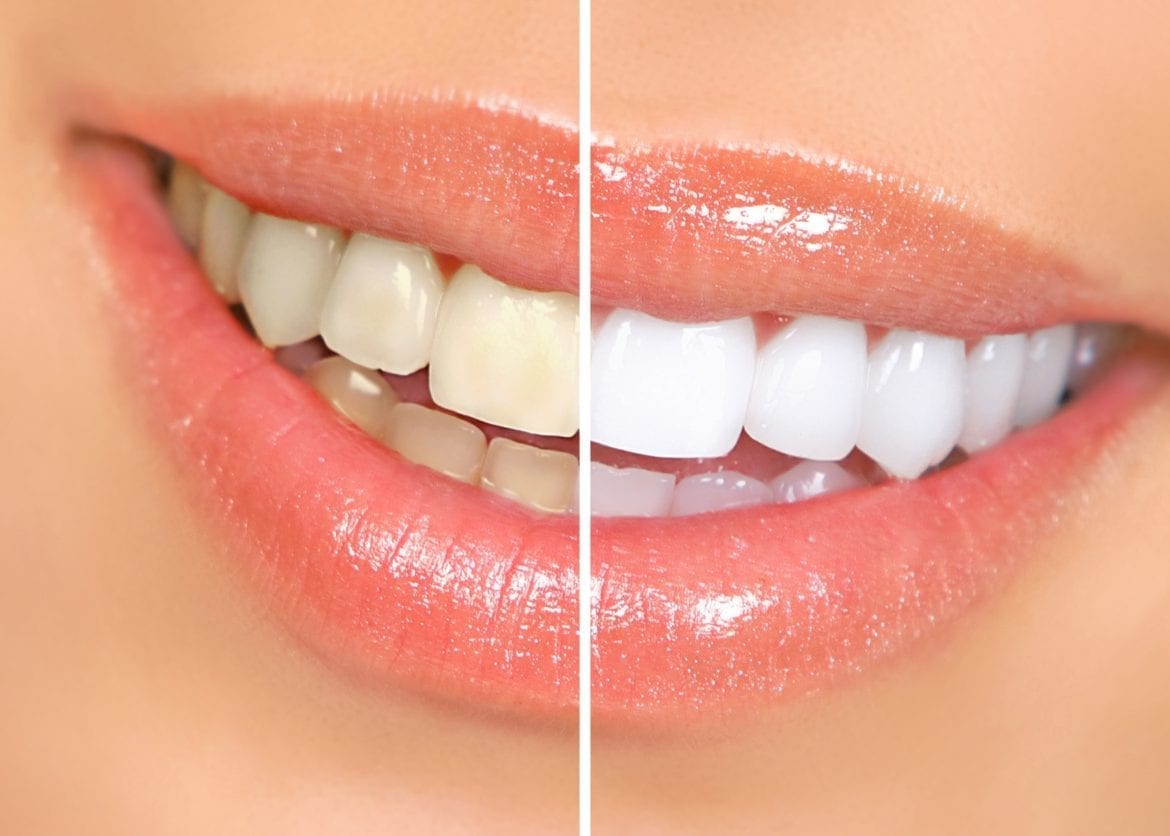There are 2 ways of bleaching:
First, bleaching in the clinic (In-office bleach):
It is a whitening procedure performed inside the clinic by your dentist for immediate results. We have several types of bleaching inside the clinic, including the plasma, which operates within the clinic.
The teeth are completely isolated and the bleaching material (hydrogen peroxide) is placed for 15-20 minutes under the plasma, and then the process is repeated several times until you reach the color and smile desired. This type of whitening is fast with amazing results.
We also have chemical teeth whitening available. First we isolate the teeth and put a chemical (hydrogen peroxide) without radiation or light for a certain period of time to achieve the desired color. This whitening quality has a good effect and amazing result on the color of the teeth.
Second, home bleaching:
This procedure involves transparent molds of the patient's teeth taken by the dentist. Carbamide peroxide is filled in the mold at home and worn for a certain period. It does not need light or radiation; the gel penetrates the enamel layer and the oxidation of pigments removes pigmentation.
Frequently Asked Questions:
Q1: What is the time period between each bleaching process?
It depends on the care and maintenance of teeth.
Q2: Can I bleach in the clinic and the house together?
Yes, for better results and to maintain a longer bleaching period.
Q3: Is it possible for teeth to not respond to bleaching?
Yes, because some teeth contain a yellow or dark ivory pigment, these may not be affected by bleaching.
Q4: What is the solution for teeth that are unresponsive to bleaching?
Consult your doctor for the ceramic shells (Veneer).
Q5: Does the bleaching cause pain or sensitivity to the teeth?
Yes, in most cases, because the oxidation reactions on the enamel layer and dentinal tubes, it may cause mild sensitivity, which disappears eventually after bleaching. This may vary from person to person.
Q6:Is the result of bleaching noticed immediately?
Yes, the final result is clear within 24 hours after the procedure.
Q7: Can the desired color be selected before starting the bleaching procedure?
No, due to the color of the tooth differing from one person to another.
Does bleaching affect composite or fillings?
No, and all composites and other fillings after bleaching are changed, and the patient shall be notified of this change in advance.
What is the best time to whiten your teeth if you are undergoing a dental treatment plan?
It is always preferable to bleach before putting the final fillings.


